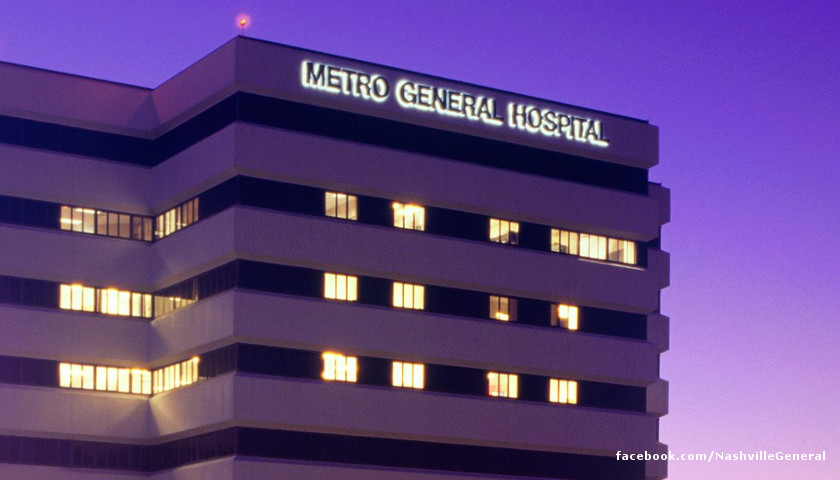Nashville General Hospital recorded an operating loss of $41.1 million for the fiscal year that ended June 30, 2017, and required $50.2 million from the Metro Nashville/Davidson County Government to stay afloat, according to its audited financial statements.
A review of the income statement summary suggests that $29.8 million of that loss was due to “allowances and discounts,” or writeoffs of bad debts.
Here’s a summary of what that income statement looks like:
Year ended June 30, 2017
Total Patient Revenue: $ 72,250,432
Allowance & discounts (writeoffs): 29,859,449
Net Patient Revenue: 42,390,983Operating Loss: 41,187,886
Amount Received from Metro Government: 50, 296,226
A more thorough examination of the financial statements reveals another stunning fact.
Nashville General Hospital provides care without charge to those who meet certain requirements. These amounts are not reported as revenue. For the year ended June 30, 2017 the amount of “charity care” revenue not reported in revenue was $40,318,922.
“The Hospital provides care to patients who meet certain criteria under its charity care policy without charges or at amounts less than its established customary rates,” page 16 of Nashville General Hospital’s FY 2017 Financial Statements says.
“Since the Hospital does not pursue collection of accounts determined to qualify as charity care, they are not reported as revenue,” the report continues.
The cost associated with delivering that free “charity care” was in excess of $15 million in FY 2017.
The financial statements provide no information as to what those “certain requirements” were for patients who received free “charity care.”
For the fiscal year ended June 30, 2017 the Metro Nashville/Davidson County Government had allocated “approximately $35 million” to the General Hospital. However, the Hospital was still suffering losses and required an additional infusion of $16 million, for a total of $50.2 million.
For the year ended June 30, 2017 the Hospital provided $70,178,371 in free Hospital/medical care (adding the $29.8 million in writeoffs and the $40.3 million in “charity care.”
This raises the obvious question, which neither Metro Nashville officials nor Nashville General Hospital officials have directly addressed: Who received this $70.1 million of free hospital care?
The total amount of financial support provided to Nashville General Hospital by Metro Nashville for the fiscal year that ends later this month on June 30, 2018 is not yet known.
Mayor David Briley’s FY 2019 budget currently allocates $46.1 million to support Nashville General Hospital, but that number may end up being higher.
Prior to her resignation in March of this year, former Mayor Megan Barry proposed shutting down Nashville General Hospital, but subsequently changed her mind.
You can read a summary of the key elements of the FY 2017 Financial Statements for Nashville General Hospital here:
[pdf-embedder url=”https://tennesseestar.com/wp-content/uploads/2018/06/hospital.docs_.02.pdf” title=”hospital.docs.02″]






How many of those treated are here illegally? Dont they have some govt (Medicare/Medicaid) that can be billed for some $$?
“Barry Soeterocare” was initiated to give the poor or uninsured medical care. If “Barry Soeterocare” is such a great item, why are Nashville taxpayers paying for the healthcare of these folks at Nashville General Hospital ? Are they too lazy to get to a computer during the sign-up period ? Even if they bums can’t pay the charge, they can apply for the federal subsidy, which is paid for by OUR tax dollars. Wonder how much of these charges was for illegal ?
In 2015 (latest data) Metro General apparently did not file any claim to receive Medicare inpatient payment. Why is that? Also, hospital contractuals provide a distinction between inpatient and out patient revenue. That would show us the average cost per inpatient stay and we should be able to receive the average cost per inpatient day. Supposedly the hospital averaged 40 inpatients per day or a total of 14,600 annual patient days. Cost per day? Income per day? The plan was to close the inpatient. Thus, the public needs to see the inpatient contractual situation vs the outpatient contractual situation. What MSDRG’s are being treated? Can they not be treated elsewhere? What service is provided that is not available within a 10 mile radius of this hospital? And what would be that average cost. Medicare Payments per MSDRG are publically available. Should be a starting point for negotiation.
https://www.cms.gov/Research-Statistics-Data-and-Systems/Statistics-Trends-and-Reports/Medicare-Provider-Charge-Data/Inpatient2015.html
I am not opposed to providing subsidized critical care to those needing it. BUT I sure as heck expect the government to pursue collection of at least a portion of the cost from those that can pay. The problem as I see it is that the government and hospital are all too ready to designate anyone who claims to be indigent the benefit of the doubt and dumps the cost onto the taxpayers. This problem is only going to worsen as the “It City” continues to attract those looking for a handout.